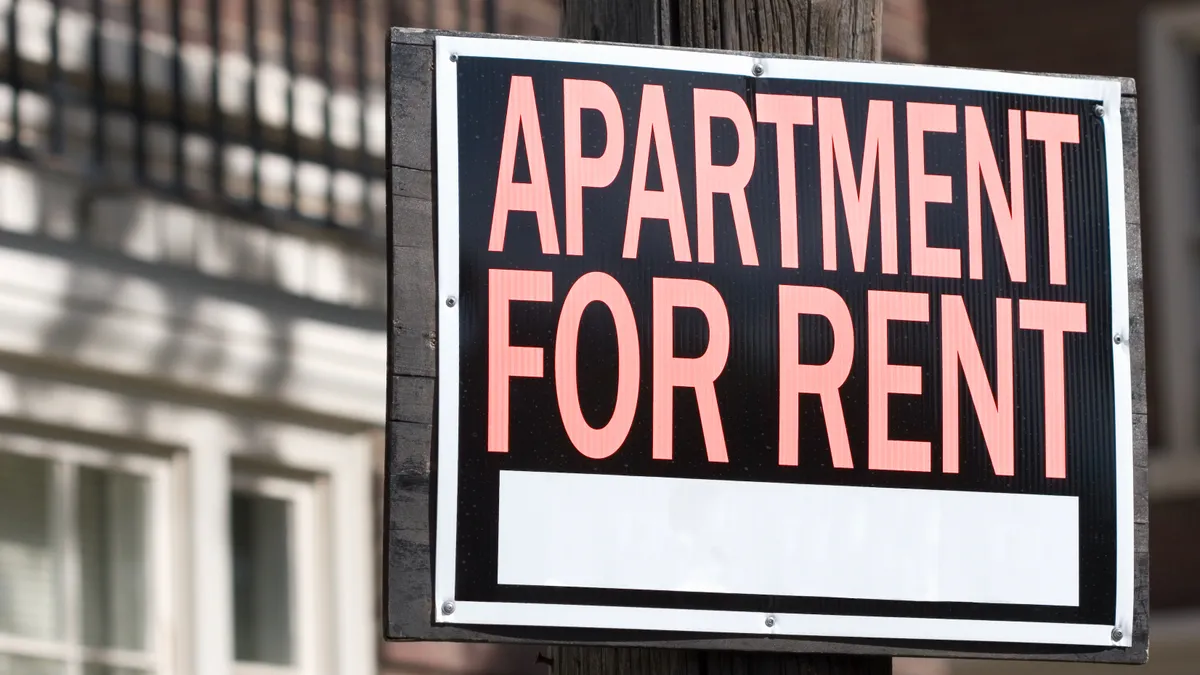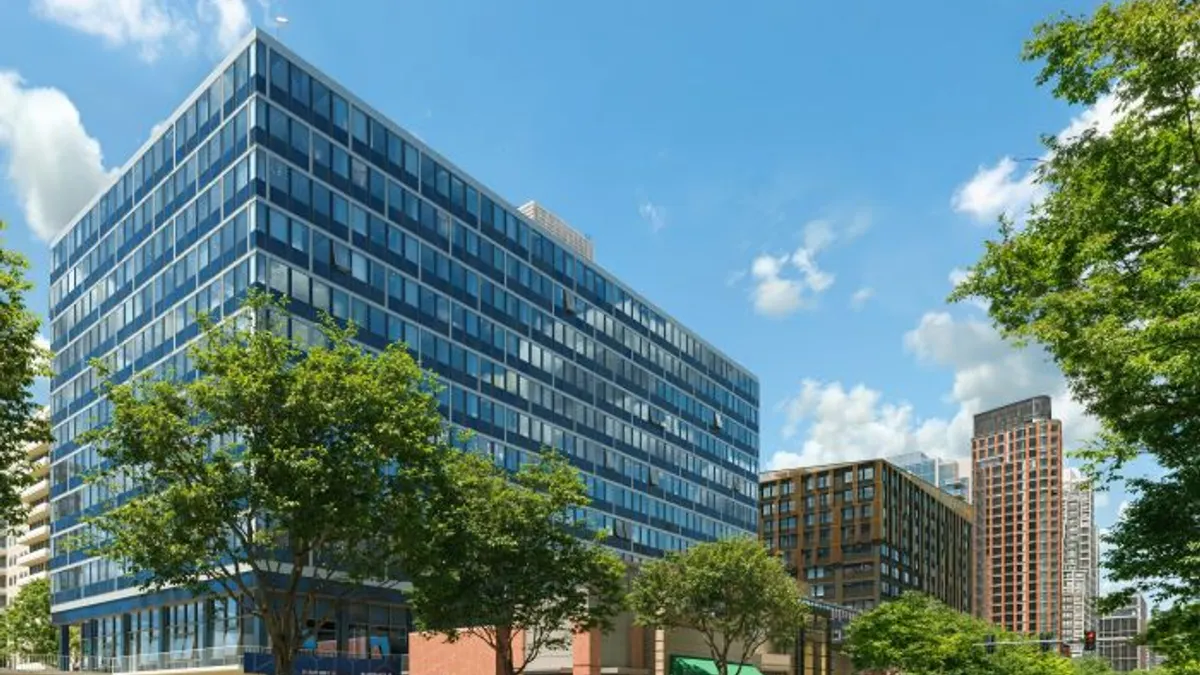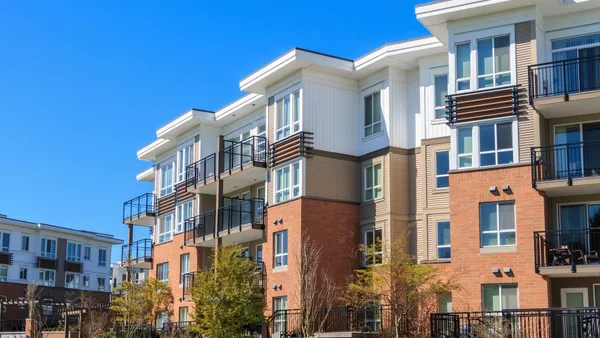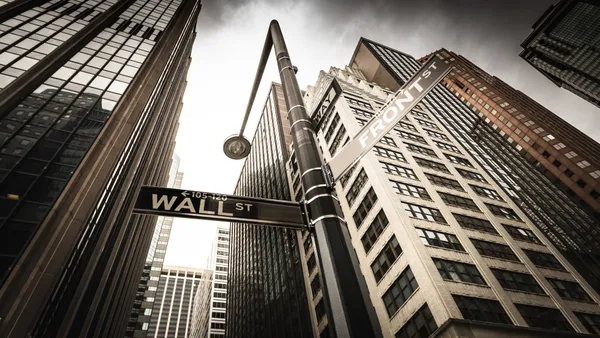Dive Brief:
- Multifamily rents continued their meteoric rise with a $19 increase in the national average asking rent in May 2022, up to an all-time high of $1,680, according to Yardi Matrix’s latest report.
- Rent growth rose by at least 10% year over year in almost all of the top 30 metros tracked by Yardi. Miami (24.2%), Orlando, Florida (23.2%) and Tampa (21.6%) remain at the top, though rent increases have slowed in all three markets.
- The rate of rent growth is decelerating nationally, down 40 basis points from April, and 130 points from peak growth in summer 2021, to 13.9%. Occupancy, a harbinger of overall demand, has also softened in some key regions.
Dive Insight:
Apartment demand has begun to slow in some Sun Belt and Western metros, with occupancy rates down in seven out of the top 30 metros, according to Yardi’s report.
Las Vegas saw the steepest decline, down 1.1% YOY to 95.1% in April 2022, the most recent period available, followed by Phoenix and Sacramento at -0.7%, down to 95.5% and 96.7%, respectively. Larger metros that lost occupancy during the pandemic are in the process of recovering. New York stands at 97.5% occupancy across all boroughs, San Jose boasts 95.5% and Chicago tracks at 95.4%.
Month-to-month rent growth performance has fallen back slightly from its most recent peak in October 2021, when rents rose 1.5%. On average, multifamily rents rose by 1.1% in May 2022 from the previous month, 3% over the past three months, and 13.9% year to date.
| Market | YOY Rent Growth, May 2022 | YOY Rent Growth, April 2022 | Difference |
|---|---|---|---|
| Miami Metro | 24.2% | 24.6% | -0.4 |
| Orlando, Florida | 23.2% | 24.1% | -0.9 |
| Tampa, Florida | 21.6% | 22.6% | -1.0 |
| Las Vegas | 19.6% | 22.1% | -2.5 |
| Orange County, California | 19.5% | 19.7% | -0.2 |
| Phoenix | 18.1% | 20.7% | -2.6 |
| Raleigh, North Carolina | 17.9% | 17.9% | 0 |
| Nashville, Tennessee | 17.8% | 17.4% | 0.4 |
| Charlotte, North Carolina | 17.6% | 17.3% | 0.3 |
| Dallas | 17.2% | 17.0% | 0.2 |
SOURCE: Yardi Matrix
Single-family built-to-rent growth is also rising in lockstep with conventional multifamily, up 12.7% year over year in May. (Yardi’s single-family rent metrics only cover built-to-rent communities with more than 50 units.)
Orlando posted the highest year-over-year rent growth for single-family built-to-rent housing at a staggering 49.5%, followed by Miami at 21%.
The Yardi report notes that in the present environment, new investment and development in the single-family rental sector is on the rise, and many potential single-family homebuyers are finding ownership out of reach or losing bids on homes to investors. This, in turn, is raising demand for single-family rental homes.
To renew or not to renew?
Renters signing new leases in May are paying, on average, 19.5% more than the previous tenants of the same unit, according to data from RealPage. This marks a dramatic rise in new lease rate changes from -3% at the start of 2021. At the local level, the Miami market leads the way for new lease rate increases at 34.2%.
Renters in Class A and B apartments are seeing larger increases than those in Class C. Among those who chose to remain in their units, Class A and Class B renters paid about a 12% premium on their rent to renew their leases in May, while Class C renewal rents rose 7.9%.
The surge is causing some observers to take pause.
“Record numbers are never sustainable,” Jay Parsons, vice president, head of economics and industry principals for RealPage, told Multifamily Dive. “Going into this year, we expected to see rent growth levels moderate in the second half of 2022. [But] six or seven months ago, we didn't know exactly why that would be... There's some signs that inflation is having an impact on the broader economy, and I think what we're gonna see is just that we've reached a point where we can't keep growing at these levels.”
Rent growth was still higher in May 2022 on a year-over-year basis than any previous May on record, according to Parsons. How long that can last is in question, though. “I think we’re at an inflection point now,” he said.
Against the backdrop of these increases, over half of renters are choosing to stay put, according to RealPage data, and the share is rising.
The state of new supply
While prices continue to rise, new units will soon be ready to meet demand — and likely impact apartment operators' pricing power.
Nearly 12 years after the most recent trough in U.S. apartment construction volume — approximately 100,000 units in late 2010 — construction activity has risen by more than sevenfold, with 760,000 new units under construction as of the first quarter of 2022, according to a RealPage report. This is the largest construction volume ever recorded in the U.S., and when complete will increase housing inventory by 4.1%.
Sun Belt and Mountain/Desert metros are among the top markets for new construction, owing to high in-migration rates, according to RealPage.
Markets with the most apartments under construction
| Market | Under Construction | YOY Inventory Change |
|---|---|---|
| 1. Phoenix | 36,168 | 9.5% |
| 2. Austin, Texas | 33,273 | 12.1% |
| 3. New York City | 32,720 | 1.7% |
| 4. Dallas | 32,143 | 4.9% |
| 5. Washington, D.C. | 31,108 | 4.7% |
| 6. Newark, New Jersey | 27,677 | 5.1% |
| 7. Atlanta | 27,487 | 5.1% |
| 8. Los Angeles | 27,362 | 2.4% |
| 9. Seattle | 23,934 | 6.6% |
| 10. Denver | 23,661 | 7.5% |
SOURCE: RealPage Market Analytics
While the annual pace of multifamily permitting is up 16.3%, the annualized month-to-month rate fell -0.6% from March to April 2022, down to 656,000 new units permitted in the last year.
New York leads the nation in new multifamily permits at 38,366, up 10.7% over the previous year.









